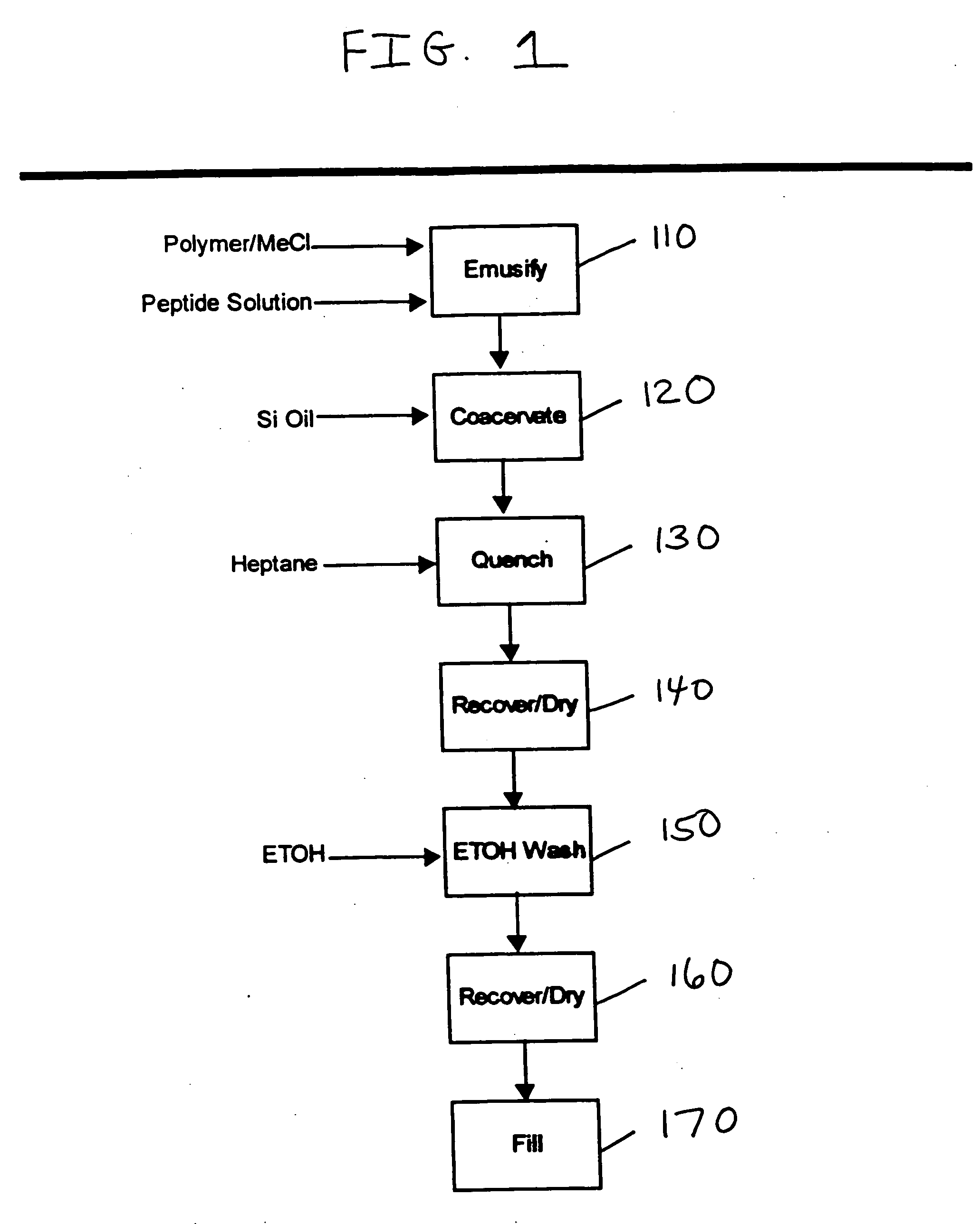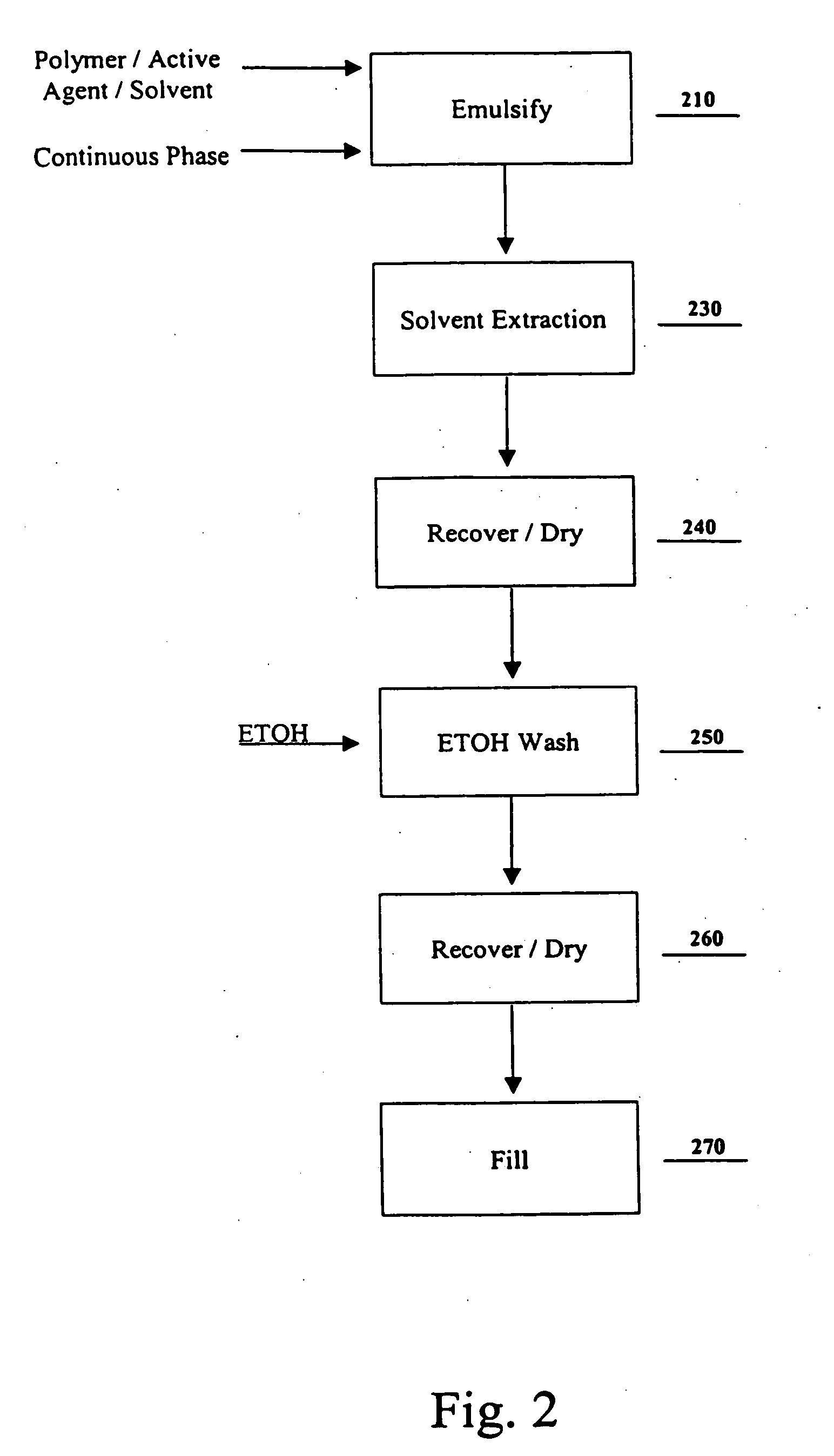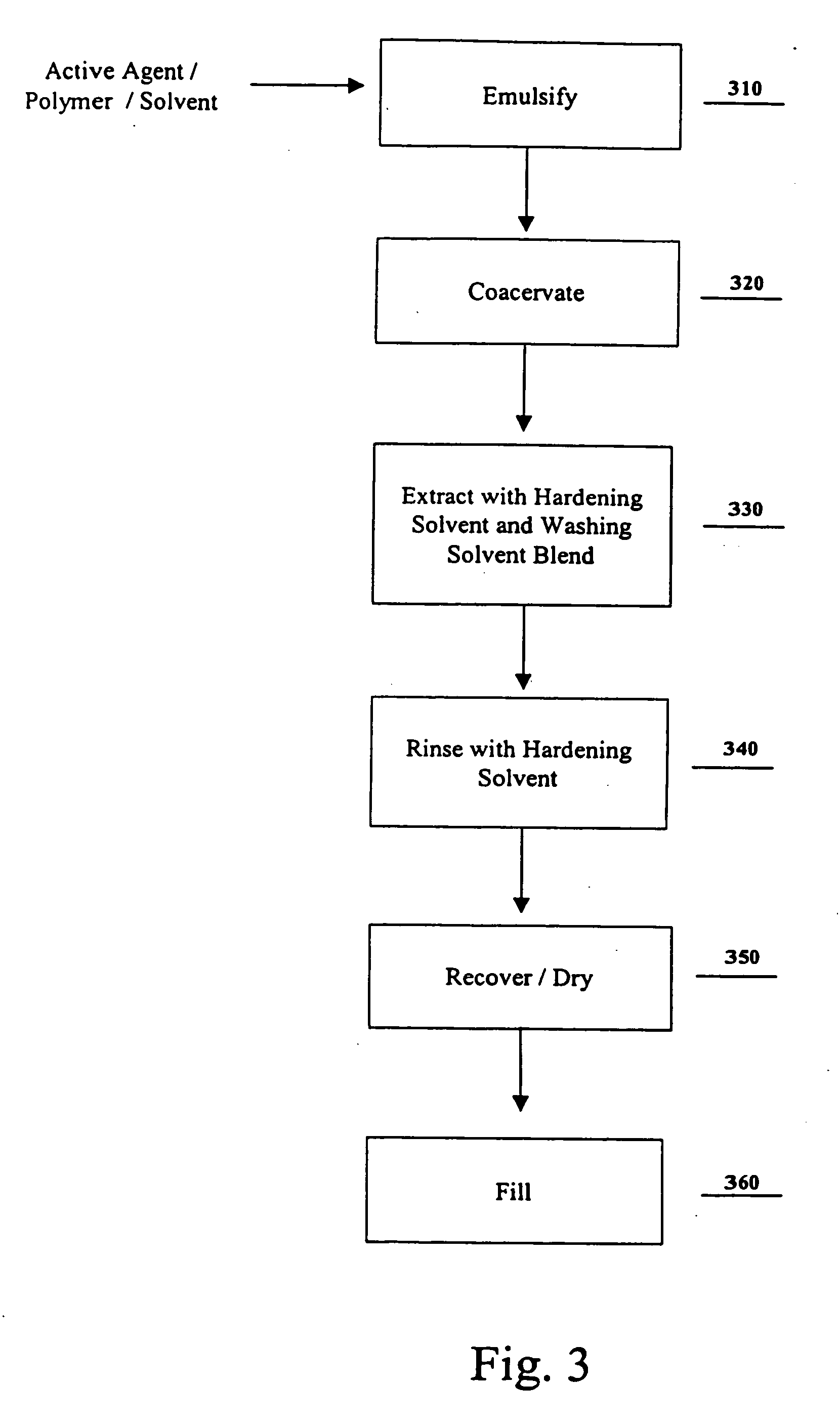Residual solvent extraction method and microparticles produced thereby
a technology of residual solvent and extraction method, which is applied in the field of preparation of microparticles, can solve the problems of inability to remove water soluble active agents, such as peptides, from the microparticles, and none of the documents described above solve the problem of removing residual solvent, so as to reduce the residual level of halogenated solvent, and reduce the residual solvent level
- Summary
- Abstract
- Description
- Claims
- Application Information
AI Technical Summary
Benefits of technology
Problems solved by technology
Method used
Image
Examples
example 1
[0077] Microparticles were prepared in accordance with the phase separation method described above and shown in FIG. 1. The polymer solution was prepared by dissolving 2.7144 g 65:35 poly(d,l-lactic-co-glycolic acid), MEDISORB® 6535 DL 2M polymer, approximately 20 kD molecular weight (Alkermes, Inc.) in 40.2 g methylene chloride. An approximate 30 wt % aqueous goserelin solution was prepared by dissolving 339.9 mg goserelin containing 82.8% peptide content (Polypeptide Laboratories) in 0.816 g deionized water. The polymer and goserelin solutions were mixed and probe sonicated for 20 seconds to form a water-in-oil emulsion. The emulsion was added to a 250-ml glass reactor. The stir speed was 1000 RPM. The polymeric precipitant, 350 centistoke silicone oil (Dow Corning) was slowly added by peristaltic pump to the reactor to induce phase separation. Addition was discontinued after adding a total of 62.2 g (1.5 to 1 ratio of silicone oil to methylene chloride) over a time period of appr...
example 2
[0080] Further experiments were done to determine the effect of temperature on solvent extraction using 100% ethanol. Microparticles were prepared in accordance with the method described above for Example 1. After completion of the recovery and drying step 140, samples of the goserelin microparticles were subjected to various washing treatments as shown in step 150. The process stages included a control (no washing), and washing with the following washing systems for a period of about two hours: 100% ethanol at 10° C.; 100% ethanol at 21° C., and 100% ethanol at 26° C. After the washing treatment, the microparticles were recovered and dried. The residual solvent levels (GC), and the goserelin content (HPLC), were measured for the dried microparticles, as shown below in Table 2.
TABLE 2HeptaneMeClEthanolGoserelinSample No.Process StageWt %Wt %Wt %Content %1Control2.51.5N / A6.32100% Ethanol2.31.20.15.910° C.3100% Ethanol0.10.080.25.821° C.4100% Ethanol0.0060.053.56.426° C.
[0081] As ca...
example 3
[0082] Three separate samples of microparticles were prepared in accordance with the method described above for Example 1. The microparticles were recovered from the extraction tank containing heptane in step 140, but were not dried. Without drying, sample 1 was placed immediately into 100% ethanol. For samples 2 and 3, the microparticles were allowed to settle in the extraction tank. Because of the low specific gravity of heptane, the microparticles settle quickly. For sample 2, a portion of the heptane was decanted and ethanol added to result in a 3:1 ratio of ethanol to remaining heptane. For sample 3, a portion of the heptane was decanted and ethanol added to result in a 1:1 ratio of ethanol to remaining heptane. The washing treatment for samples 1, 2, and 3 was carried out at 20° C. for a period of about two hours. After the washing treatment, the microparticles were recovered and dried. The residual solvent levels (GC), and the goserelin content (HPLC), were measured for the d...
PUM
| Property | Measurement | Unit |
|---|---|---|
| temperature | aaaaa | aaaaa |
| temperature | aaaaa | aaaaa |
| detection threshold level | aaaaa | aaaaa |
Abstract
Description
Claims
Application Information
 Login to View More
Login to View More - R&D
- Intellectual Property
- Life Sciences
- Materials
- Tech Scout
- Unparalleled Data Quality
- Higher Quality Content
- 60% Fewer Hallucinations
Browse by: Latest US Patents, China's latest patents, Technical Efficacy Thesaurus, Application Domain, Technology Topic, Popular Technical Reports.
© 2025 PatSnap. All rights reserved.Legal|Privacy policy|Modern Slavery Act Transparency Statement|Sitemap|About US| Contact US: help@patsnap.com



